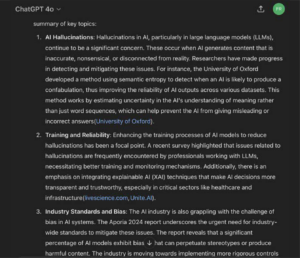
September is the month where a few of my children get ready to return to school, back to their learning and studies in preparation for a future career. In their preparation, they are choosing courses, buying books and brushing up on previous learnings. In a similar manner, I have been considering the skills and knowledge I will need to learn or brush up on to be successful this coming year. For those who may be doing the same, I’d like to share a book list along with activities I’m doing as part of my continuous learning. I’ll then wrap up this message with some CAS updates.
Here’s my categorized career-prep book list. I’ve marked the books that have had an outsized impact on my development as “highly recommended.” Also, I’ve included a few books I’m currently reading because they may be of interest.
Communication and persuasion
Crucial Conversations, Grenny et al.
- Highly recommended. This book is a must-read and came from a friend’s reading list, along with Trusted Advisor by Maister et al. and a few books from The Arbinger Institute. The book provides some foundational skills for high-stakes conversations, including avoiding victim or villain stories and expanding the pool of shared knowledge (i.e., listening) in conversations. I’ve re-read the book a few times and go over it every few years.
Getting More, Diamond et al.
- Highly recommended. This book was suggested by a leader at Google, and it covers a novel approach to negotiating and persuasion, with the view that nearly everything is a negotiation. If you need a teaser, the author has a Talks at Google video1 that covers a lot of the material.
HBR Guide to Office Politics, Dillon et al.
- Highly recommended, in particular for managers. I found this book while browsing Harvard Business Review’s recommendations — this book should be called How to Simply Get Along at Work and outlines basic strategies for diplomacy at work in many common situations.
Presentation
Back of the Napkin, Roam
- Recommended (reading in progress). A very creative actuary recommended this book, which covers thinking through sketches and pictures. It suggests visuals as a way to brainstorm ideas, develop them and persuasively communicate them. The author also has a Talks at Google video2 on this book and a TED Talk3 on the book. Roam is also the author of Show and Tell, a book on narrative for presentation that borrows heavily from Joseph Campbell’s The Power of Myth.
Say it with Charts, Zelazny
- Recommended. A decade ago, my boss recommended this book because the charts in my presentations really annoyed him. This book covers what charts to use for what purpose and how to label them, with the goal of visuals that easily communicate the message without confusion. I would also recommend the Model Systems Knowledge Translation Center website4 for clarity of graphs. Both the book and the website are useful for managers to share with journeyman actuaries who could use help with their visuals.
I’d like to share a book list along with activities I’m doing as part of my continuous learning.
Critical thinking, problem-solving and perspectives
What’s Your Problem? Wedell-Wedellsborg et al.
- Highly recommended. A colleague in strategy suggested this book. If you need help stepping outside the box, read this book. The premise is that you may not be solving the right problem.
Freakonomics, Levitt and Dubner et al.
- Highly recommended. This book is famous and covers novel perspectives on some events from an economist’s point of view. Dubner also hosts a Freakonomics podcast5 that’s worth listening to.
Nudge: The Final Edition, Thaler and Sunstein et al.
- Highly recommended. This behavioral economics book was mentioned on the Freakonomics podcast a few times, so I picked it up. The book talks about everyday choices from the perspective of a “paternalistic libertarian,” encouraging choice architects to design choices that guide users to the right decisions.
Invisible Women: Data Bias in a World Designed for Men, Criado Perez
- Highly recommended (reading in progress). This book was recommended reading by a few women leaders, including one from my team. Similar to the previous books, this is an eye-opening book. The book provides a perspective on how our world wasn’t designed with women in mind from health and medicine to work to public planning and policy.
Unwritten Laws of Engineering, Skakoon
- Recommended. A former star employee, now founder, gave me this book. It’s older but covers basic principles of engineering that may apply to some of our technical work. The book is concise and an easy read.
Measure What Matters, Doerr
- Recommended (reading in progress). A few people in business recommended this book to me. It covers important considerations and examples that will help you pick and define the right metrics and set appropriate KPIs. This is on my to-finish list.
The Happiness Advantage, Achor
- Recommended (reading in progress). The former CFO of Google gave me this book. It’s an easy premise and an easy read so far. Achor also has a TED Talk6 on the subject.
Strategy (in progress)
Good Strategy, Bad Strategy, Rumelt et al.
- Recommended for senior managers. I overheard CAS Past Presidents Kathy Antonello and Jessica Leong talk about this book, so I bought and read it. The book covers a lot of examples of bad strategy and is useful for vetting strategies that are vague and, in short, useless.
Competitive Strategy: What is Strategy? Porter et al.
- Recommended (reading in progress). This book is one of the seminal works in strategy and shows up in many MBA and business courses. It was also on the Motley Fool’s reading list at one point for those who invest based on fundamentals.
In addition to books, I’m reading a few papers every month to stay up on applied science. The latest ones include the 2023 Han et al. paper on interference detection for A/B testing7 and Ding and VanderWheele’s 2016 paper on assumption-less sensitivity testing for causal studies.8 On the AI front, I find “The Pile: An 800GB Dataset of Diverse Text for Language Modeling”9 interesting; indeed, Anthropic, Apple and a few other companies are using the open-source Pile modeling dataset to train large language models (LLMs). On jailbreaking LLMs, I would suggest “LLM Defenses Are Not Robust to Multi-Turn Human Jailbreaks Yet,” 10 which documents multiple exploits. If you are on the machine learning and data science platform Hugging Face,11 the full set of multi-turn prompts are there, but please use them thoughtfully with the site’s caveats in mind. Finally, if you want to keep up on AI, one interesting way is to ask ChatGPT directly for a summary of latest developments with links to papers and articles.

CAS updates
In August many of the CAS Board’s committees and task forces met, culminating in an in-person Board weekend on August 17-18 that was dedicated to strategic planning and stakeholder engagement. The Strategic Planning Task Force presented a proposed three-year plan, incorporating feedback from the two Town Halls we held with CAS members. This feedback helped the task force refine the plan and made the board discussion more effective. In addition, the Membership Linkage Task Force, tasked by the Board to build stronger connections among the board and our members, presented a proposal for how to inform members on board topics, how the leadership structure works, what the committee charters are and how to engage with the Board. The proposal included a CAS Board Portal with assets made possible by the great work of the Governance Committee. Finally, over that same weekend, Board Chair Roosevelt Mosley and Director Steve Belden, who is also a member of the Board’s Canada Task Force, met in person with a Canadian employer as part of our effort to engage and understand our Canadian members better. We hope to share more about the CAS Strategic Plan and the board’s efforts in the coming months.
We also just wrapped up 2024 CAS Student Central Summer Program, which had 468 participants from 30 countries around the world. These students all finished with a certificate, a greater understanding of P&C insurance, as well as new friends in the CAS.
Finally, I hope you all are excited and planning on attending the Annual Meeting.12 We’ve invited the incoming president of the International Actuarial Association (IAA), Bozenna Hinton, to join us at the Annual Meeting, where we’ll be hosting a meet-and-greet roundtable on Tuesday for those who want to learn more about the IAA. CAS Board Director Wanchin Chou, FCAS, and I also met with Barbara Richardson, director of the Arizona Department of Insurance and Financial Institutions, who will be presenting an Annual Meeting session that Wanchin and I are moderating. We hope this session will give members a view into the efforts and concerns of our regulatory partners. The organizers and chair have prepared many exciting and interesting sessions (flying cars) focused on innovation, so please consider joining us in Phoenix.
Thank you for reading. I hope to see many of you in person soon. ●
References
-
- 1. Diamond, Stuart. “The Art of Negotiation.” https://youtu.be/2QtZ-vObJrk?feature=shared.
- 2. https://www.youtube.com/watch?v=kuA_yz7aTo0 .
- 3. https://www.youtube.com/watch?v=XEnrQqOHx3I .
- 4. https://msktc.org/knowledge-translation/charts-and-graphs-findings.
- 6. https://www.youtube.com/watch?v=GXy__kBVq1M .
- 7. Han, Kevin et al. https://doi.org/10.48550/arXiv.2211.03262.
- 8. Ding, Peng and Vanderweele, Tyler doi:10.1097/EDE.0000000000000457
- 9. Gao, Leo et al. https://doi.org/10.48550/arXiv.2101.00027.
- 10. Li, Nathaniel, et al. https://doi.org/10.48550/arXiv.2408.15221.
- 11. https://huggingface.co/.
- 12. https://annual.casact.org<https://annual.casact.org/>











